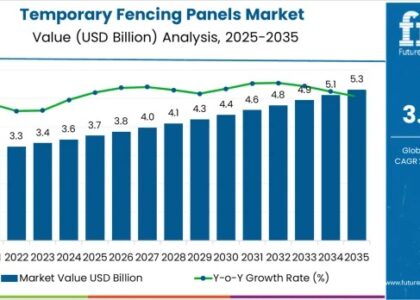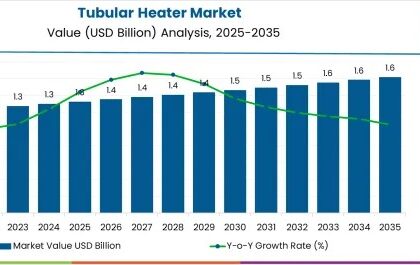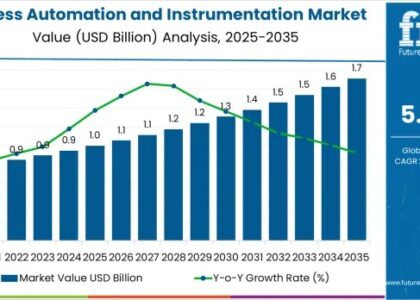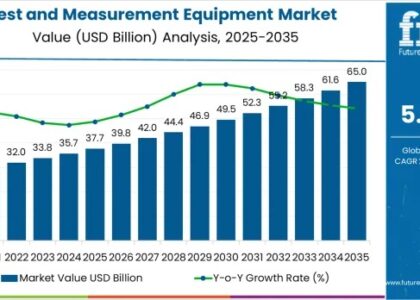The global sales of dermal fillers are estimated to be worth USD 6.4 billion in 2024 and anticipated to reach a value of USD 8.8 billion by 2034. Sales are projected to rise at a CAGR of 3.3% over the forecast period between 2024 and 2034. The revenue generated by dermal fillers in 2023 was USD 6,190.4 million.
But here’s the catch: rapid growth has outpaced regulation, safety protocols, and frankly, common sense. The market is booming, but so is risk—and America is right in the thick of it.
Get Sample Report: – https://www.futuremarketinsights.com/reports/sample/rep-gb-5699
🌍 Worldwide Frenzy, Local Fallout
From Asia’s sprawling cities to Europe’s refined clinics, dermal fillers are everywhere. They’re no longer just a celebrity indulgence or a luxury service. They’re a global obsession. FMI shows the market is riding a wave fueled by rising incomes and changing beauty standards.
Yet, North America—and especially the U.S.—is where the craze has spiraled out of control. The demand isn’t just strong; it’s voracious. But the systems meant to protect consumers aren’t keeping up. We’re seeing the price of vanity in real, painful terms.
🇺🇸 America’s Dangerous Infatuation
Here’s the blunt truth: dermal fillers in the U.S. have become almost too accessible. Procedures that should be medical interventions are being treated like quick fixes or casual beauty treatments. This cavalier attitude is a recipe for disaster.
FMI’s report highlights a troubling gap between booming consumer demand and the slow crawl of safety oversight. Clinics multiply, but standards don’t. Unqualified injectors flourish. Consumers often have no idea what they’re getting into. The result? Increased complications, sometimes devastating ones.
🏠 DIY Disaster Waiting to Happen
Perhaps most alarming is the rise of DIY filler culture—a trend FMI notes with grave concern. People are injecting themselves with cheap kits bought online, completely unaware of the risks. This isn’t just reckless—it’s downright dangerous.
Self-injections have led to infections, disfigurement, and even permanent tissue damage. The industry and regulators must wake up and clamp down hard on these black-market products. Otherwise, this ticking time bomb will explode in emergency rooms across the country.
📈 Growth, But at What Cost?
The numbers tell a seductive story: hyaluronic acid fillers dominate, innovation is booming, and medspas are popping up everywhere. But beneath the surface, there’s a hidden price tag.
FMI’s data makes clear that the market’s expansion is outpacing the development of safety measures. New, longer-lasting fillers add complexity. Untrained hands wield these powerful tools with reckless abandon.
Explore In-Depth Analysis-Click Here to Access the Report:- https://www.futuremarketinsights.com/reports/dermal-fillers-market
🗣️ My Take: Enough Is Enough
The dermal filler market has hit a critical juncture. It’s no longer a matter of if, but when a major public health crisis will unfold. We cannot keep glamorizing and commoditizing these procedures without enforcing strict, enforceable standards.
Here’s what needs to happen—now:
- Rigorous, mandatory certification for all injectors.
- Clear, honest patient education about risks.
- Aggressive enforcement against illegal online sales and unlicensed providers.
Key Segments of Dermal Fillers Market
By Ingredient:
In terms of ingredients, the industry is divided into (hyaluronic acid, oly-L-lactic acid, calcium hydroxylapatite, polymethyl methacrylate, collagenm and polynucleotide (PN).
By Gender:
In terms of gender, the industry is segregated into (male, female & transgender).
By Application:
In terms of application, the industry is segregated into (wrinkle reduction, skin folds/ nasolabial folds, augmentation of lips, cheek &chin, scar treatment, hand rejuvenation, jawline and chin lines countering, eyebrows treatment, hollowness under eyes, nose jobs, volume restoration, restoring damaged tissues, restoration of facial fat loss and dentistry).
By Distribution Channel:
In terms of distribution channel, the industry is segregated into cosmetic and aesthetic clinics, hospitals, online sales, plastic surgery centers and medical spa.
By Region:
Key countries of North America, Latin America, Western Europe, Eastern, South Asia, East Asia and Middle East and Africa (MEA) have been covered in the report.





